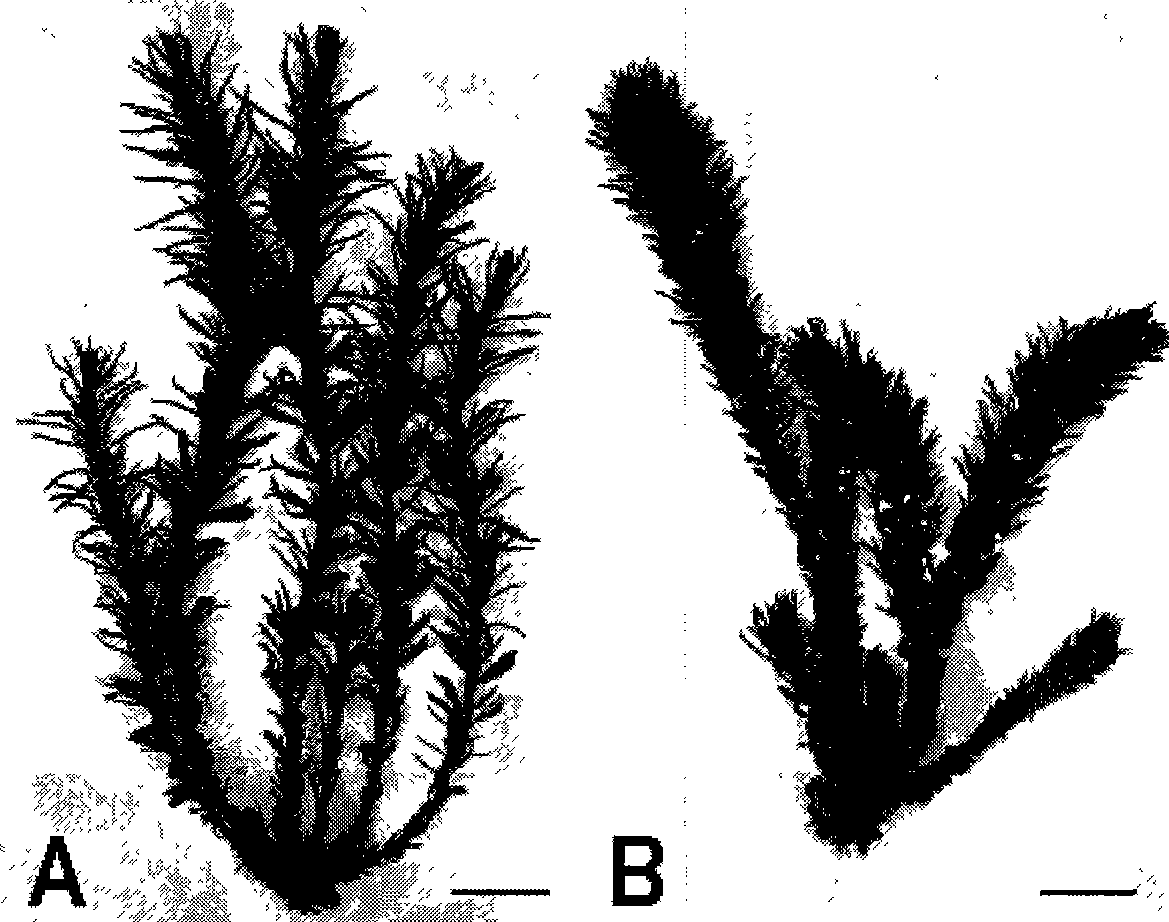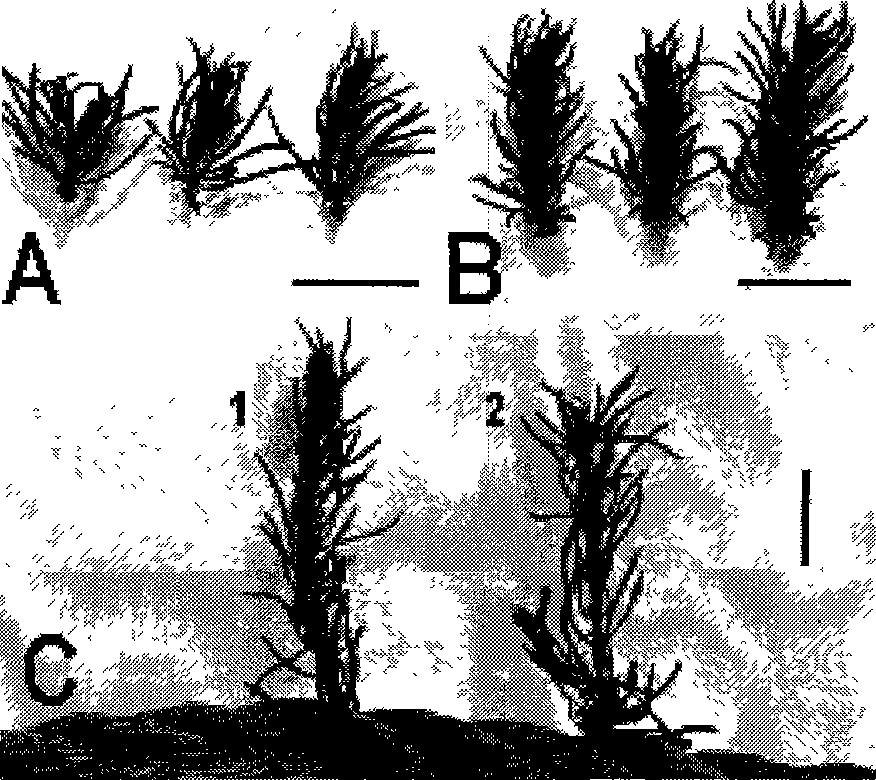Sargassum thunbergii seedling quick-propagation method using leader branch segment tillering method
A technology of sargassum and sargassum algae, which is applied in botany equipment and methods, seaweed cultivation, plant cells, etc., can solve the problems of high cost and long cultivation period, and achieve low cost, large seedling production, and seedling cultivation Inexpensive effect
- Summary
- Abstract
- Description
- Claims
- Application Information
AI Technical Summary
Problems solved by technology
Method used
Image
Examples
Embodiment 1
[0026] The dioecious strains of Sargassum under natural conditions are difficult to distinguish from the morphological characteristics alone. However, sargassum can be divided into two different types in terms of external morphology. One type of strain has sparse leaves and a slender main stem ( figure 1 A); Another type of algae strain has thick leaves and strong main stem ( figure 1 B), statistics show that the biomass of two different types of main branches of the same length is 1.3 to 2.1 times that of the former.
[0027] The present invention selects main branches of two different types of algal strains to carry out culture experiments respectively. After seaweed samples are collected, use brushes and tweezers to remove debris and attached organisms on the surface. Select the longer main branch, and use KMnO with a mass concentration of 1‰ 4 Treat for 1.5 to 2 minutes, and then rinse with a large amount of sterile sea water for 3 to 4 times. If temporary cultivation...
Embodiment 2
[0040]The experiment was conducted from August 7, 2005 to November 28, 2005. The samples were collected from the intertidal zone of Qingdao Second Beach (35.35°N, 119.30°E, 10-35cm below the water surface).
[0041] The algae was collected from the intertidal zone of Qingdao No. 2 Bathing Beach on August 2, 2005. Different types of main branches ( figure 2 A), cultured after cutting the segments respectively, see the development process of different types of main branch segments within two weeks figure 2 B and figure 2 c.
[0042] The culture conditions are: temperature 17℃; light intensity 25μmol / m 2 per s; photoperiod 12:12h (light: dark);
[0043] The medium used is: ES medium + BG-11 seawater nutrient solution, that is, the ingredients of BG-11 formula are added to the general ES seawater culture medium;
[0044] BG-11 Formula: H 3 BO 3 2.86μg / l, MnCl.4H2O 1.81μg / l, ZnSO 4· 7H2O0.222μg / l, NaMoO 4· 2H2O 0.39 μg / l, CuSO 4· 5H2O 0.079μg / l, Co(NO3) 2· 6H2O 0.04...
PUM
 Login to View More
Login to View More Abstract
Description
Claims
Application Information
 Login to View More
Login to View More - R&D
- Intellectual Property
- Life Sciences
- Materials
- Tech Scout
- Unparalleled Data Quality
- Higher Quality Content
- 60% Fewer Hallucinations
Browse by: Latest US Patents, China's latest patents, Technical Efficacy Thesaurus, Application Domain, Technology Topic, Popular Technical Reports.
© 2025 PatSnap. All rights reserved.Legal|Privacy policy|Modern Slavery Act Transparency Statement|Sitemap|About US| Contact US: help@patsnap.com



